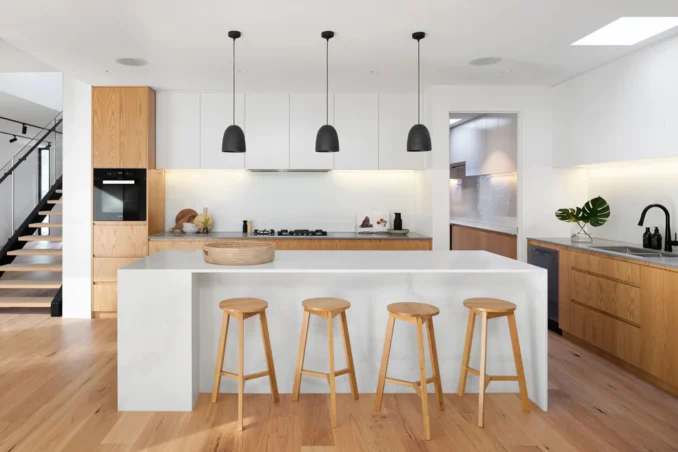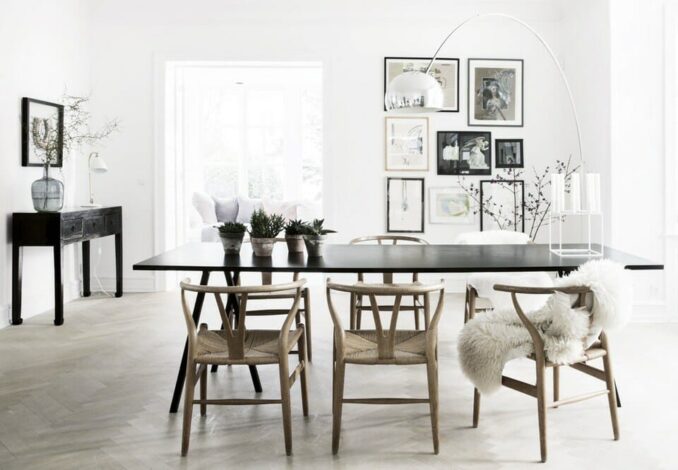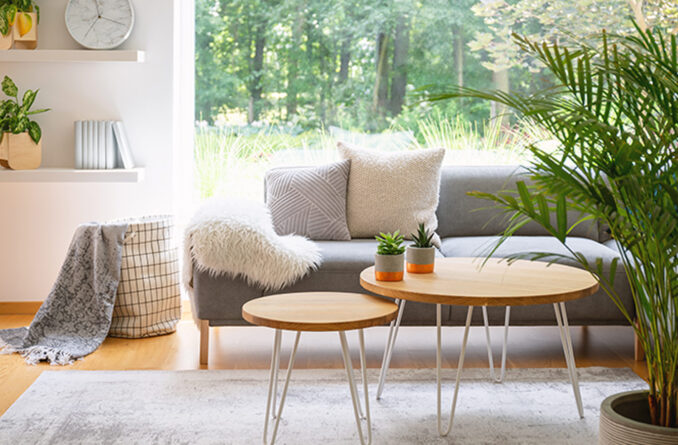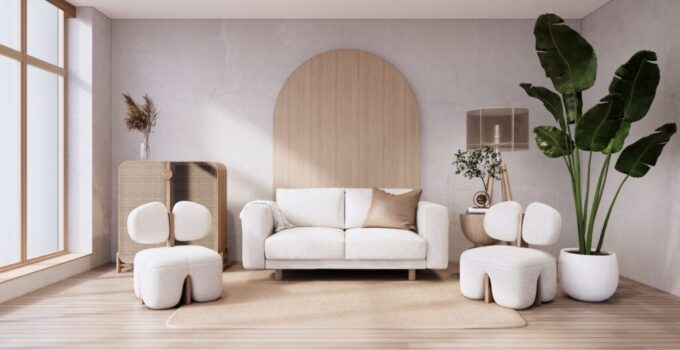Scandinavian design has earned acclamation for its clean lines, understated elegance, and functional beauty, making it an influential style across the globe. Characterized by simplicity and utility, these designs often employ a philosophy of “less is more,” reflecting the minimalist ethos that dominates much of Nordic culture. It is a style that seems to embrace the light and space of the northern landscapes, manifesting in interiors and objects that combine form with function in the most harmonious way possible. As it continues to gain popularity, Scandinavian design remains a testament to the artistry of its origins, where every curve and angle serves a purpose, and aesthetics never compromise the usability of a space.
Tracing back to the early 20th century, Scandinavian design emerged from the five Nordic countries: Denmark, Finland, Iceland, Norway, and Sweden. Its development has been marked by various inflection points that contributed to its distinctive aesthetic, driven by a philosophy that merges beauty with practicality. This stemmed from the societal values of democracy, social equality, and the desire for cultural identity, which all played significant roles in shaping the form and functionality of everyday objects. In subsequent sections, we will explore the reasons behind its enduring appeal, the norms that define its practice, and how it continues to impact design philosophies around the world, imparting lessons in creating spaces that are as livable as they are lovely.
The Roots of Scandinavian Aesthetics: Cultural and Historical Influences

Source: wearewellmade.com
The sleek and refined silhouette of Scandinavian design is not happenstance but rather the culmination of geographical challenges and cultural histories woven seamlessly into functional artistry. The expansive, rugged landscapes of Northern Europe, with their stark contrasts of long, light summers and dark, harsh winters, necessitated an approach to design that married the pragmatic need for warmth and light with a deep appreciation for the surrounding natural beauty. Historically, the Viking era left a mark on the Scandinavian ethos, promoting a culture of resilience and resourcefulness that later translated into design elements that emphasize durability and minimalism. In times when resources were scarce, Scandinavian people mastered the practice of creating objects that were not only enduring but also pleasing to the eye, an approach that has carried forward into modern aesthetics.
Functionality took root alongside simplicity, with each serving as the other’s foundation, ensuring that Scandinavian design pieces are not only easy to use but also serve a purpose of improving the quality of daily life. This combination of form and function has established Scandinavian design as a popular choice with a wider global audience yearning for the serene, clean lines, and the uncluttered lifestyle that this aesthetic creates.
Sustainability and Eco-Friendliness: A Natural Aspect of Design

Source: dailyscandinavian.com
With Scandinavian design, sustainability is not just a trend for a Houston interior designer, but a foundational principle that guides the entire creative process. This design philosophy places significant emphasis on the use of materials and production methods that embody eco-friendly values. It is not uncommon to see Scandinavian pieces created with organic, renewable, or recycled resources, all chosen for their minimal impact on the environment.
The approach extends to the very core of how products are made—conscious efforts are taken to ensure that the manufacturing processes are energy-efficient and produce as little waste as possible. What’s more, Scandinavian design is synonymous with simplicity, functionality, and timeless aesthetics, which naturally promotes longevity. The long lifespan of such items actively works against a throwaway culture, reducing waste and encouraging consumers to make more mindful choices.
The Principle of Minimalism in Scandinavian Design
Scandinavian design is renowned for its minimalistic approach, favoring simplicity and functionality over excessive ornamentation. This design philosophy is evident in the careful selection of materials, often consisting of natural wood, leather, and wool, which are chosen for their quality and sustainability. The color palette in Scandinavian design leans towards cool, muted tones, such as soft grays, whites, and blues, which work to create a serene and cohesive aesthetic. Decor elements are sparse but meaningful, with each item often serving a practical purpose in addition to its visual appeal. The minimalism inherent in Scandinavian design is a major factor in its timeless nature.
Without the clutter of transient design trends and unnecessary embellishments, the clean lines and uncluttered spaces remain relevant and adaptable across decades. This focus on less being more translates into multifunctional living spaces that are both efficient and inviting. Every piece of furniture and home accessory is purposeful, maximizing the available space and contributing to an overall sense of order and tranquility. The minimalist approach at the heart of Scandinavian design not only defines its aesthetic but also enhances the daily lives of those who inhabit these spaces, demonstrating that true elegance lies in simplicity.
Functionality and Practicality: Core Tenets of Nordic Design
At the heart of Scandinavian design lies an unwavering commitment to the user experience, championing functionality and practicality without compromising on beauty. This design philosophy is deeply rooted in the ideals of simplicity and utility, ensuring that every element serves a purpose and enhances everyday living. Scandinavian design isn’t just about creating objects that are pleasing to the eye; it’s about fashioning spaces and products that are truly conducive to a comfortable, effortless lifestyle. It masterfully combines practicality with clean, minimalist aesthetics, resulting in items that are both useful and visually appealing.
The genius of Nordic design lies in its capacity to conceal complexity behind smooth, uncomplicated surfaces, giving rise to environments that feel open, serene, and decluttered. This intentional integration of function into the structure of design ensures that objects not only look good but also work efficiently and improve the user’s quality of life, embodying a blend of form and function that has come to define Scandinavian design.
The Psychological Impact of Scandinavian Design in Contemporary Homes

Source: invaluable.com
The defining characteristics of Scandinavian design extend well beyond its streamlined and understated look to profoundly affect our mental health and sense of well-being. At the heart of this design philosophy is the concept of functional aesthetics—where form meets function, enabling the creation of environments that can lessen stress and enhance our general sense of happiness. For individuals surrounded by Nordic interiors, the abundance of natural light is key; it bathes the area, merges with muted color schemes, and bounces off intentional furniture to foster a luminous and expansive ambiance that has been scientifically associated with better mood and efficiency.
By following these design tenets, Scandinavian style isn’t just about crafting spaces that are aesthetically appealing; it cultivates a tranquil and balanced atmosphere that can naturally lead to a more serene and focused way of life. This emphasis on simplicity, practicality, and the integration of natural elements leads to living spaces that transcend being fashion-forward and instead become havens for mental rejuvenation and insight, exemplifying a detailed approach to contemporary homes that provides sustenance for both the psyche and the spirit.
Scandinavian design is esteemed for its clarity, minimalism, and utility, attracting those who admire subtle beauty and perpetual style. The straightforward contours, natural textures, and light, calming color schemes have made it a choice beyond its original borders, affecting contemporary aesthetics and redefining domestic spaces with an emphasis on comfort and health. It’s evident that Scandinavian design will persist in its growth, welcoming new substances and innovations while remaining faithful to its essential tenets.





